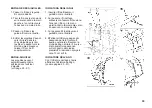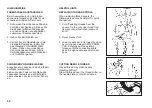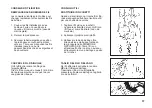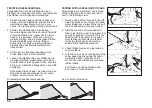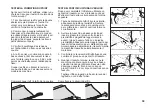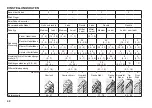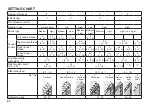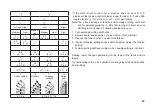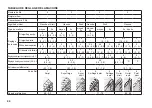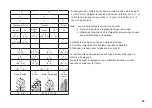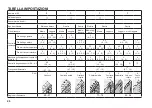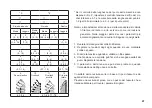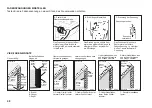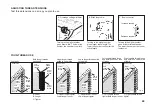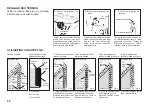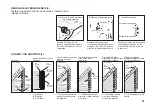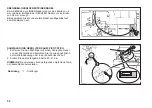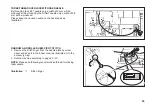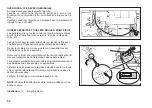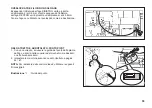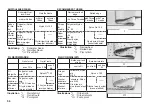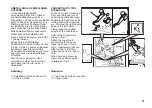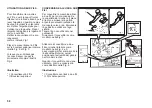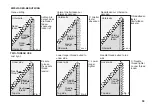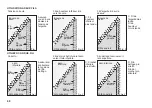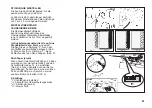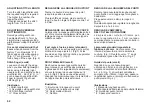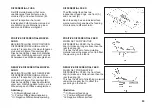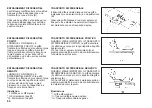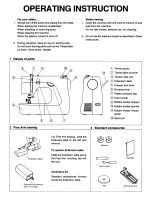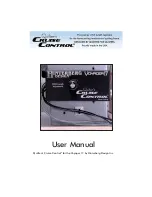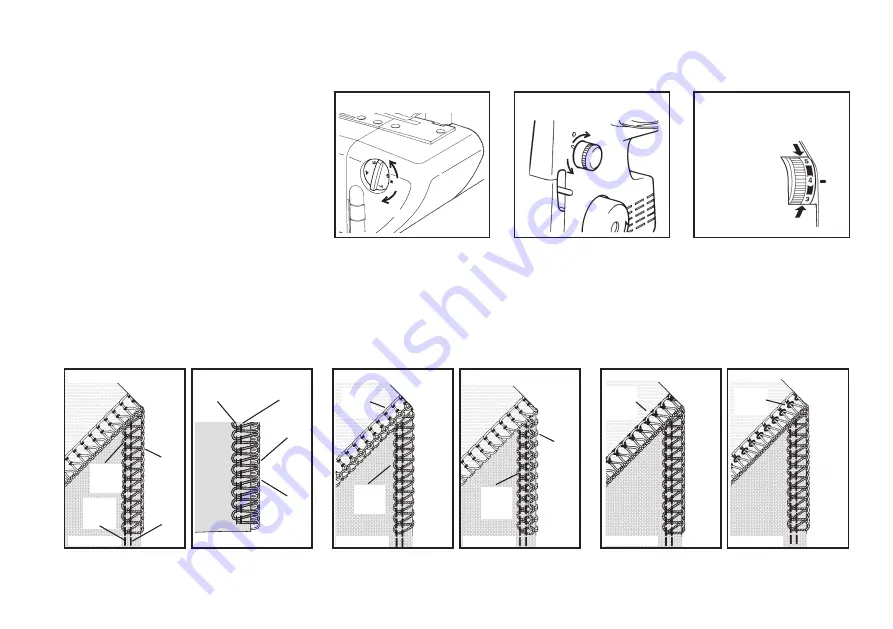
49
ADJUSTING THREAD TENSIONS
Test thread tensions on a scrap you plan to use.
FOUR-THREAD USE
Just right.
Fig. 2
Fig. 3
Fig. 4
Fig. 5
Upper looper thread
pulled to under side.
Both looper threads
hanged off.
Lower looper thread pulled
to top side.
Left needle thread loose
and visible on under side
of fabric.
Right needle thread loose
and visible on under side
of fabric.
C: Upper looper tighter
Lower looper looser
A: Wider
B: Longer
C: Tighter
C: Upper looper looser
Lower looper tighter
C: Left needle thread
tighter Both looper looser
C: Right needle thread
tighter
Under side
Top side
Upper
looper
thread
Lower
looper
thread
Left
needle
thread
Right
needle
thread
Under side
Top side
Upper
looper
thread
Lower
looper
thread
Under side
Top side
Under side
Top side
Upper
looper
thread
Lower
looper
thread
Left
needle
thread
Right
needle
thread
A. Overedge cutting width dial
B. Stitch length dial
Turning to the higher number
gives longer stitch length. The
lower the number, the shorter the
stitch length.
Turning to the higher number
gives wider width. The lower the
number, the narrower the width.
Fig. 1
Under side
Top side
Upper
looper
thread
Lower
looper
thread
Left
needle
thread
Right
needle
thread
C. Tension control
Turning to the higher number
gives a tighter thread tension.
The lower the number, the looser
the tension.
ADJUSTING THREAD TENSIONS
Test thread tensions on a scrap you plan to use.
FOUR-THREAD USE
Just right.
Fig. 2
Fig. 3
Fig. 4
Fig. 5
Upper looper thread pulled
to under side.
Both looper threads hanged
Lower looper thread pulled
to top side.
Left needle thread loose
and visible on under side of
fabric.
Right needle thread loose
and visible on under side of
fabric.
C: Upper looper tighter
Lower looper looser
A: Wider
B: Longer
C: Tighter
C: Upper looper looser
Lower looper tighter
C: Left needle thread tighter
Both looper looser
C : R i g h t n e e d l e t h r e a d
tighter
Under side
Top side
Upper
looper
thread
Lower
looper
thread
Left
needle
thread
Right
needle
thread
Under side
Top side
Upper
looper
thread
Lower
looper
thread
Under side
Top side
Under side
Top side
Upper
looper
thread
Lower
looper
thread
Left
needle
thread
Right
needle
thread
A. Overedge cutting width dial
B. Stitch length dial
Turning to the higher number gives
longer stitch length. The lower the
number, the shorter the stitch length.
Turning to the higher number gives
wider width. The lower the number,
the narrower the width.
Fig. 1
Under side
Top side
Upper
looper
thread
Lower
looper
thread
Left
needle
thread
Right
needle
thread
C. Tension control
Turning to the higher number gives a
tighter thread tension. The lower the
number, the looser the tension.
longer
shorter
narrower
wider
Decrease tension
Increase tension
ADJUSTING THREAD TENSIONS
Test thread tensions on a scrap you plan to use.
FOUR-THREAD USE
Just right.
Fig. 2
Fig. 3
Fig. 4
Fig. 5
Upper looper thread pulled
to under side.
Both looper threads hanged
Lower looper thread pulled
to top side.
Left needle thread loose
and visible on under side of
fabric.
Right needle thread loose
and visible on under side of
fabric.
C: Upper looper tighter
Lower looper looser
A: Wider
B: Longer
C: Tighter
C: Upper looper looser
Lower looper tighter
C: Left needle thread tighter
Both looper looser
C : R i g h t n e e d l e t h r e a d
tighter
Under side
Top side
Upper
looper
thread
Lower
looper
thread
Left
needle
thread
Right
needle
thread
Under side
Top side
Upper
looper
thread
Lower
looper
thread
Under side
Top side
Under side
Top side
Upper
looper
thread
Lower
looper
thread
Left
needle
thread
Right
needle
thread
A. Overedge cutting width dial
B. Stitch length dial
Turning to the higher number gives
longer stitch length. The lower the
number, the shorter the stitch length.
Turning to the higher number gives
wider width. The lower the number,
the narrower the width.
Fig. 1
Under side
Top side
Upper
looper
thread
Lower
looper
thread
Left
needle
thread
Right
needle
thread
C. Tension control
Turning to the higher number gives a
tighter thread tension. The lower the
number, the looser the tension.
longer
shorter
narrower
wider
Decrease tension
Increase tension
longer
shorter
narrower
wider
ADJUSTING THREAD TENSIONS
Test thread tensions on a scrap you plan to use.
FOUR-THREAD USE
Just right.
Fig. 2
Fig. 3
Fig. 4
Fig. 5
Upper looper thread pulled
to under side.
Both looper threads hanged
Lower looper thread pulled
to top side.
Left needle thread loose
and visible on under side of
fabric.
Right needle thread loose
and visible on under side of
fabric.
C: Upper looper tighter
Lower looper looser
A: Wider
B: Longer
C: Tighter
C: Upper looper looser
Lower looper tighter
C: Left needle thread tighter
Both looper looser
C : R i g h t n e e d l e t h r e a d
tighter
Under side
Top side
Upper
looper
thread
Lower
looper
thread
Left
needle
thread
Right
needle
thread
Under side
Top side
Upper
looper
thread
Lower
looper
thread
Under side
Top side
Under side
Top side
Upper
looper
thread
Lower
looper
thread
Left
needle
thread
Right
needle
thread
A. Overedge cutting width dial
B. Stitch length dial
Turning to the higher number gives
longer stitch length. The lower the
number, the shorter the stitch length.
Turning to the higher number gives
wider width. The lower the number,
the narrower the width.
Fig. 1
Under side
Top side
Upper
looper
thread
Lower
looper
thread
Left
needle
thread
Right
needle
thread
C. Tension control
Turning to the higher number gives a
tighter thread tension. The lower the
number, the looser the tension.
longer
shorter
narrower
wider
Decrease tension
Increase tension
Decrease tension
Increase tension

